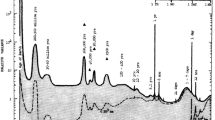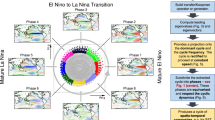Abstract.
Core records, both ice and deep-sea, suggest that the dominant character is that of a red-noise process or random walk. Examination of a few typical records supports the inference that the contribution of the Milankovitch frequencies to climate change at most represents only a small fraction of total climate variance. Most spectral densities are sufficiently "flat" that rates of change will be dominated by the highest frequencies present in the forcing. A broad maximum near 100 ky period can be readily rationalized without invoking an oscillator. One need only suppose that there is an approximate threshold beyond which the climate system collapses. The quasiperiodicity is then governed by a combination of the collapse threshold, the system memory time scale, and the intensity of the stochastic forcing. Changes in the forcing intensity would lead to a shift in the dominant time scale. Some inferred spectral power laws may be inaccurate owing to undersampling of the records.
Similar content being viewed by others
Author information
Authors and Affiliations
Additional information
Electronic Publication
Rights and permissions
About this article
Cite this article
Wunsch, .C. The spectral description of climate change including the 100 ky energy. Climate Dynamics 20, 353–363 (2003). https://doi.org/10.1007/s00382-002-0279-z
Received:
Accepted:
Issue Date:
DOI: https://doi.org/10.1007/s00382-002-0279-z




